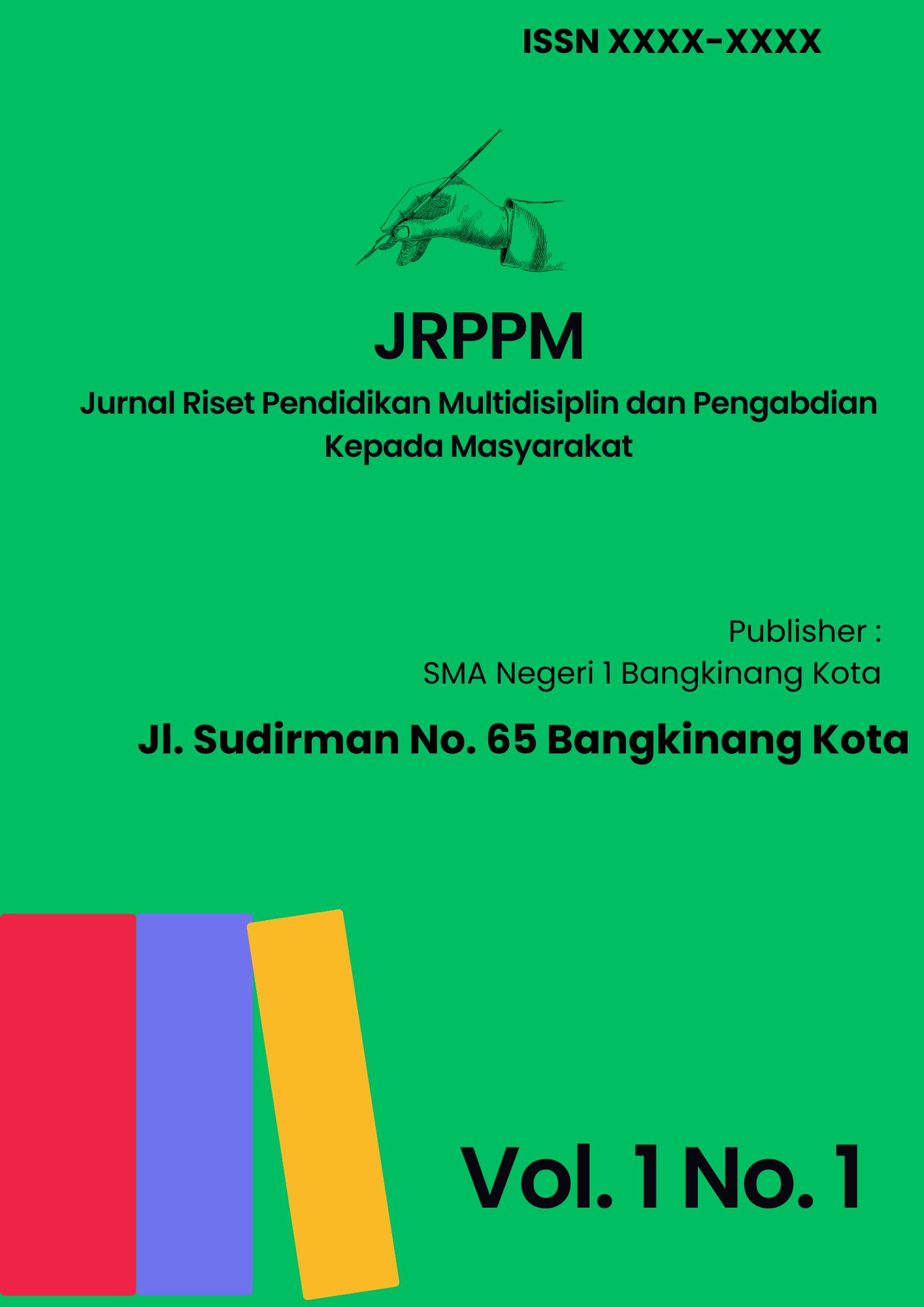Indonesian Folklore Movie as a Media to Teach Listening: An Experimental Study
DOI:
https://doi.org/10.31004/jrppm.v1i1.44Keywords:
Effectiveness, Indonesian Folklore Film, Listening Ability, Experimental Studies, StudentsAbstract
This study aims to test the effectiveness of Indonesian folklore films as a medium in teaching English listening comprehension to vocational school students. Using a quantitative approach with an experimental design, this study uses a pretest-post-test control group design to assess the improvement of students' listening skills. A total of 30 students were divided into two groups: an experimental group taught using Indonesian folklore films and a control group taught through conventional audio material. Data collected using standard listening tests before and after the intervention. Test scores were analyzed using SPSS version 25. Paired sample t-tests were performed to test the significance of the difference between pretest and posttest scores. The results showed a significant improvement in the posttest score of the experimental group (Mean = 84.13) compared to the pretest score (Mean = 78.00), with a significance value of 0.000 (p < 0.05), which showed a significant influence. These findings suggest that Indonesian folklore films can improve students' listening comprehension by offering a familiar and culturally interesting audiovisual context. The visual and emotional elements in folklore narrative help students understand spoken English better, making the learning process more effective and enjoyable.
References
Abbuhl, R., Gass, S., & Mackey, A. (2013). Experimental research design. Research methods in linguistics, 1, 116-134.
Adams, D., Carlson, H., & Hamm, M. (1990). Cooperative learning & educational media: Collaborating with technology and each other. Educational Technology.
Fenuku, S. D. (2024). The core aspects of effective language pedagogy: listening, speaking, writing and reading. Jurnal Smart, 10(2), 132-154. https://doi.org/10.52657/js.v10i2.2345
Goraya, M. M., Mehmood, M. U., Iftikhar, N., & Bhatti, A. U. R. (2025). The Role of Folk Narratives in Moral Education: An Interdisciplinary Approach. Journal of Political Stability Archive, 3(2), 186-205. https://doi.org/10.63468/jpsa.3.2.10
Hayati, A., & Mohmedi, F. (2011). The effect of films with and without subtitles on listening comprehension of EFL learners. British Journal of Educational Technology, 42(1), 181-192. https://doi.org/10.1111/j.1467-8535.2009.01004.x
Hua, T. L., & Beverton, S. (2013). General or vocational English courses for Taiwanese students in vocational high schools? Students’ perceptions of their English courses and their relevance to their future career. Educational Research for Policy and Practice, 12, 101-120.
Kim, H. S. (2015). Using authentic videos to improve EFL students' listening comprehension. International journal of contents, 11(4), 15-24. https://doi.org/10.5392/IJoC.2015.11.4.015
Matthews, J. S., & López, F. (2019). Speaking their language: The role of cultural content integration and heritage language for academic achievement among Latino children. Contemporary Educational Psychology, 57, 72-86. https://doi.org/10.1016/j.cedpsych.2018.01.005
Mayer, R. E. (2002). Multimedia learning. In Psychology of learning and motivation (Vol. 41, pp. 85-139). Academic Press. https://doi.org/10.1016/S0079-7421(02)80005-6
Nurafifah, F. F., Simbolon, M. E., & Noviana, M. (2021). The effect of wayang media on folklore listening skills. Indonesian Journal of Elementary Teachers Education, 2(1). https://doi.org/10.25134/ijete.v2i1.4096
Nurgaliyeva, S., Zhumasheva, A., Yelikpaev, S., Kapassova, B., Nygmetova, B., & Kairova, M. (2024). Challenges and Approaches to Audiovisual Translation of Disney Cartoons into the Kazakh Language: An Analysis of Cultural Adaptation. Eurasian Journal of Applied Linguistics, 10(3), 69-80.
Sánchez-Auñón, E., Férez-Mora, P. A., & Monroy-Hernández, F. (2023). The use of films in the teaching of English as a foreign language: a systematic literature review. Asian-Pacific Journal of Second and Foreign Language Education, 8(1), 10.
Saraswati, N. (2024). English Idiomatic Expressions in EFL Classroom through Movies: Challenges and Opportunities. Global Expert: Jurnal Bahasa dan Sastra, 12(1), 19-24. https://ejournal.uigm.ac.id/index.php/GE/article/view/4429
Um, E., Plass, J. L., Hayward, E. O., & Homer, B. D. (2012). Emotional design in multimedia learning. Journal of educational psychology, 104(2), 485. https://psycnet.apa.org/doi/10.1037/a0026609
Widhiyanti, K., & Gunanto, S. G. (2020). Nusantara folklore in the digital age. In Proceedings of the 2nd International Conference on Interdisciplinary Arts & Humanities (ICONARTIES).
Downloads
Published
How to Cite
Issue
Section
License
Copyright (c) 2025 Khusnul Khuluqin Nisak

This work is licensed under a Creative Commons Attribution-ShareAlike 4.0 International License.






